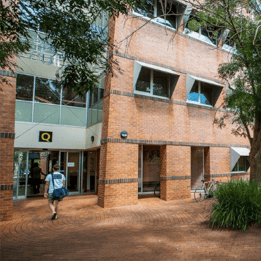Reactive and planned maintenance - getting the balance right
Balancing reactive and planned maintenance is challenging, especially when it seems like you’re constantly undertaking urgent repairs. But it’s possible to make that transition: discover the steps involved, and read real-life case studies of organisations that have made the change.
Getting the balance right between reactive and planned maintenance can be challenging. We’d wager that nearly every Asset Manager or Facility Manager would welcome any shift from a reactive to a planned maintenance approach.
It’s not just about reducing the impact on customers; it’s about reducing the overall cost of maintenance, and the number of distractions for an already busy maintenance team.
Balancing reactive and planned maintenance may also help you control your limited maintenance budget.
If there is too much reactive maintenance, it can affect customers and stakeholders; generate increased and unbudgeted expenditure; and create unnecessary interruptions.
But does that mean that all reactive maintenance is ‘bad’?
Just because reactive maintenance is challenging in terms of managing resources, that doesn’t mean it should be avoided altogether. Simple items – especially when they are low cost – could be managed in a reactive way. But there should be a pragmatic programme to move towards a planned approach that considers the criticality of the assets and the potential impact of a failure.
Take the example of a light bulb in a house or office: it’s more practical to replace a burnt-out light bulb than proactively replace it every year because it might burn out one day. The consequences of a non-functioning light bulb are both minimal and manageable in this instance. Yet a light bulb in an operating theatre would be far more critical if it failed. Similarly, if specialist equipment is needed to replace light bulbs in a key area, it’s more cost-effective to hire a scissor lift and replace all the bulbs at once, rather than individually. To sum up, maintenance is all about considering the overall costs and impacts.
Let’s take a closer look at the definitions of reactive and planned maintenance.
Definition of planned maintenance
Planned maintenance involves scheduling inspections and maintenance of property at regular intervals. The NAMS Property Manual defines maintenance as: “All actions necessary for retaining an asset as near as practicable to its original condition, but excluding rehabilitation or renewal.”
Definition of reactive maintenance
Also known as corrective maintenance or breakdown maintenance.
This involves fixing assets after they’ve failed, or no longer meet standards – for example, cracked glass, a leaking tap, or a stained carpet.
The response taken to reactive maintenance would depend on the impact and level of risk, as well as the organisation’s policies and standards.
In some cases the response may be more urgent: for example, exposed electrical wires are likely to be repaired within hours, whereas a hole in an interior wall may be repaired during the next building refurbishment. Or a stain on a carpet in a hotel room may be cleaned within days, whereas a stain in a rental property may never be removed.
In the instances where the repair work is more urgent, the asset or property manager may feel they aren’t in control of their budget if a disproportionately large proportion of their time is spent responding to reactive maintenance.
An example of reactive and planned maintenance
Let’s take the example of a roof to see what the difference is between reactive and planned maintenance:
- Planned/preventative maintenance: An annual inspection of the roof’s condition, plus a surface treatment to prevent the build-up of moss.
- Reactive maintenance: Repairing a leak in the roof, noting there may be additional reactive work as a flow-on effect from the leak, such as repairing plaster and paintwork.
Thus reactive maintenance can have a flow-on effect, whereby additional items need replacing, in addition to the asset that initially failed. Because the roof wasn’t fixed in time, the impact is far greater, with additional costs (that probably hadn’t been budgeted for), plus disruption for the building occupants.
At SPM Assets, we believe that many organisations would benefit from having a greater understanding of maintenance: the type of maintenance being done; why it’s happening; and the full impact and associated costs.
How to create a balanced approach to reactive and planned maintenance
While it’s easy to recognise that incorporating more planned maintenance is ideal, the reality is that it can be difficult to make the change. It’s about changing habits and behaviours as much as anything else. For example, we all know that we should inspect the roofs of our homes annually, and treat them for moss, but the reality is that few people do.
But balancing reactive and planned maintenance is possible. SPM Assets has helped clients transition to a more planned approach to maintenance, which in turn has resulted in reduced reactive or unplanned maintenance.
Here are the steps involved in creating a balance between reactive and planned maintenance:
-
Setting policies and standards
First and foremost, an organisation needs to set policies and standards with regard to maintenance and quality standards. This involves defining what’s acceptable, what isn’t acceptable, and how it will respond to the maintenance of different asset classes. This will help to achieve a sustainable balance between reactive and planned maintenance.
In practical terms, this involves reviewing and analysing past maintenance work. What was the cause of any failures? What was the impact of the failures?
Maintenance also needs to be prioritised within available funding parameters.
-
Accurate condition assessments
Once policies and standards have been set, the organisation can scope building assessments. Based on the previous work around policies and standards, it will now have a guide as to which assets need to be assessed and what data and information is required.
If this sounds daunting, remember that SPM Assets (a) has resources available to help with this work, and (b) we have some tricks up our sleeves if you don’t have the budget to assess absolutely everything.
-
Central database of condition assessments
The condition assessments should be held in a central database that the relevant team has access to. All too often, we see condition assessments stored on a spreadsheet on a team member’s computer. When that person leaves, the spreadsheet is forgotten about and neglected, so it soon becomes out of date. A live, central repository is key. It’s a critical tool that needs to be easily accessed.
-
Reporting functionality
Not only do you need condition assessments in a database – you need to be able to easily interrogate your data to run meaningful reports.
-
Strategic approach
The asset manager needs to champion and embrace planned maintenance, and be able to take a strategic approach to make it become a reality in their organisation. The policies and standards should be maintained and adjusted where necessary to reflect a sustainable balance between quality and affordability
Examples of organisations that have embraced planned maintenance
SPM Assets has worked with organisations in a number of sectors to help them better balance reactive and planned maintenance in a way that meets their objectives:
Tāmaki Regeneration – community housing provider for 18,000 residentsSPM Assets has supported the organisation since 2015 with software and services to suit Tāmaki Regeneration’s changing needs. The work included property condition assessments and developing a range of business and planning reports. SPM Assets then collaborated to produce a prioritised works programme to address known compliance, condition, and quality shortfalls. “As of April 2021, 61% of our maintenance spend is planned, which is a huge change from two years ago when it was largely reactive.” – Tracy Massam, Asset Manager |
|
University of Southern Queensland – a building portfolio over 160,000m²The university’s goal was to implement an 80/80/20 approach to asset management over three years:
“The implementation of the SPM solution has enabled us, for the first time, to quickly produce accurate, evidence based reports on the status of our built Estate and its associated funding needs. As a consequence, the information has been particularly useful to our senior executive team as they consider funding priorities in a competitive environment.” – Dr. David Povey, Executive Director Campus Services |
|
As these case studies show, not only is it possible to move from reactive maintenance to a planned approach – but there are many advantages in doing so.
Advantages of planned maintenance
Having a good balance between reactive and planned maintenance has many benefits:
- Extending the useful life of assets deferring the need for capital replacements.
- Maintaining the performance of in-service assets and arresting the rate of deterioration.
- Reducing the likelihood of premature asset failure.
- Planned work is less disruptive and easier to manage than emergency repairs.
- Fewer out-of-hours calls mean lower callout costs and less overtime, creating cost savings.
- Improved budget control as the work is planned in advance.
- Improved customer service and quality standards, as the assets are fit for purpose.
- Lifecycle analysis helps organisations plan future needs
- Scientific, evidence-based reports help with funding applications.
Next step to embracing planned maintenance
If you would like a practical approach to balancing reactive and planned maintenance in your organisation, please contact our team to see how we can help you.
Subscribe to our Broadcast
Our monthly newsletter featuring asset management tips and insights, and the latest SPM Assets news.



